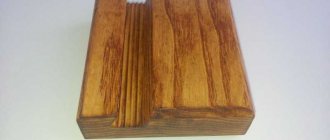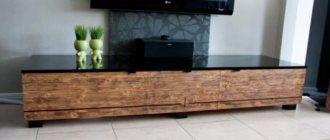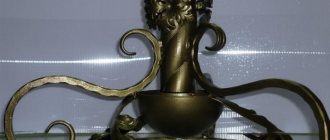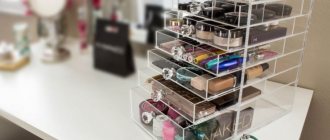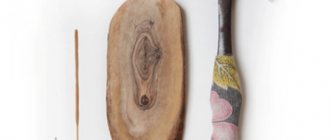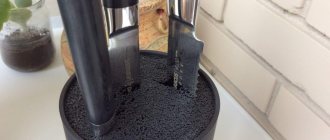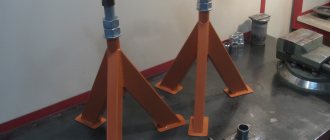Stand accessories and tools
If you have plans to make a soldering iron holder with your own hands, then you need to find the necessary tools and things that will help you realize your plans. The main items you may need for this include:
- A metal sheet;
- Wooden board;
- Screwdriver;
- Wire;
- Metal can;
- Screwdriver;
- Electric drill;
- Screws with nuts or self-tapping screws.
Depending on what kind of do-it-yourself soldering iron stand you will make, you may need a different set of tools and parts. But most people choose these options because they are the most convenient.
How to build a relationship with an old lamp
If you get your hands on a rare old instrument, you should not rush to put it into operation. The same should apply to a tool that has simply not been used for a long time. It is useful to start by cleaning the outside of the lamp and inspecting it carefully. You should make sure that the control valve rotates without problems, the container lid opens and seals securely.
Before using the pump, it is useful to disassemble it and lubricate the cuff with lithol. Now we assemble the pump and check its operation, as well as the tightness of the tank. We pump air into the container without fuel. We apply a solution of water and soap with a brush to all connections and seals: air should not pass anywhere.
Before refilling an old lamp, it is useful to rinse the inside of the tank with gasoline, thus removing possible rust products. If all the pressure is maintained and the tap is working, fill the tool and get to work. Good luck to everyone and may the following video serve as a clear illustration of the above.
Wire soldering iron stand
Making a wire stand for a soldering iron with your own hands begins by straightening the wire itself.
To get started you need:
- Cut a piece of wire 0.3 meters long;
- Clamp one end of the wire with pliers, and then wrap the remaining length around the tool several times;
- With the other end you need to do the same procedures;
- Stretch the wire from this position in different directions with two pliers
- Next you need to start making the stand. The straight wire must be divided into several parts. It is worth making a rectangle out of it, for example, with sides of 5 and 10 cm. It is advisable to solder this structure so that it retains its shape. At the same time, you need to solder the top part. To do this you will need a few more pieces of wire. Thus, on one of the sides of the resulting rectangle there will be another “U”-shaped structure soldered to its ends. The upper part of the structure can be bent to the bottom so that the soldering iron does not roll off it.
- On the other side of the base rectangle, a similar “U”-shaped structure of the same or a different size should be made. With the same values, a homemade soldering iron stand will hold the soldering iron in a vertical position. Otherwise it will be tilted. The upper parts of the towering forms must be soldered together for stability. Then you need to check the structure for strength by installing a tool on it. If everything is fine, then the do-it-yourself soldering iron stand made of wire is ready.
See how easy it is to make a homemade electronics housing with your own hands
Translated by alexlevchenko for mozgochiny.ru
Every radio amateur who immerses himself in the world of electronics sooner or later has a desire to decorate his electronic crafts in beautiful cases. This raises the problem of choice.
Usually their sizes are very limited, and the quality leaves much to be desired. Good quality cases are very expensive.
Therefore, I had an idea, why not start making high-quality cases my own hands .
Having scoured the Internet, unfortunately, I didn’t find anything useful. All the tutorials boiled down to the fact that if you have a laser cutter, making elegant plexiglass boxes is not very difficult.
But since I, like most readers, do not have a laser cutter, I decided to develop a technology for making homemade cases, using available hand tools.
They turned out not as narrow and elegant as if I had used a laser cutter, but they were quite strong.
Step 1: Materials
- Fragments of plexiglass (plexiglass) of any thickness. I used 3mm and 5mm;
- Acrylic glue, but if it is not possible to “get” it, you can use super glue;
- Sandpaper and needle file;
Step 2: Cutting Plexiglas
- First of all, you need to determine the dimensions of the case being manufactured (in my case, 10 x 6.35 x 6.35 cm).
- Let's mark the plexiglass in accordance with the diagram.
We will use an old hacksaw blade as a guide. The cutter should go perpendicular to the surface of the plexiglass. We scratch (cut through) about half of the total thickness. Then we break it with a careful movement. Clean the edge of the cut with sandpaper or a file.
Let's cut out all six sides. It’s better to make them a little larger; we will always have time to reduce them.
Step 3:
Let's polish the workpieces. They must have right angles and perpendicular sides.
Step 4: Connecting the sides
Let's use electrical tape to assemble the body parts together. We will glue all the joints with glue, but without fanaticism, spilled excess glue may “come out sideways” in the future.
- Due to the fact that I did not take into account the thickness of the plexiglass, the end walls turned out to be smaller.
- Note: To avoid installation difficulties, consider the thickness of the material.
Step 5: Sanding
No matter how hard you try, you still won't have perfect edges. Therefore, we carefully process the edges, making them as even as possible.
- If glue gets on the external surfaces, you will have to apply enough force to sand off the remaining adhesive.
Step 6: Add a Cover
In order to secure the cover to the body, it is necessary to make supports. Let's take a piece of thick plexiglass, cut out four cubes, and then sand their edges. We glue them below the level of the top edge so that it is flush with the sides of the box. Install the cover, drill four holes, and then screw screws into them.
Step 7:
Thank you for watching and I sincerely hope that this article will help you in making your own crafts . MozgoChins, what kind of housings do you use for your electronic homemade products ?
(Az Source)
Source: https://mozgochiny.ru/electronics-2/posmotrite-naskolko-prosto-izgotovit-samodelnyiy-korpus-dlya-elektronnoy-samodelki-svoimi-rukami/
Soldering iron stand made from fuses
A do-it-yourself soldering iron stand using improvised materials is the simplest and cheapest way to get the desired design. To create a stand from fuses you need:
- Textolite, or as its replacement - a wooden block;
- Circuit breakers.
The block is prepared as a base, so its surface must be flat for greater stability. After preparing the base, the fuse jaws are installed on the product. The distance between them is selected individually according to the size of the soldering iron. They can be secured using self-tapping screws, since there is always a hole on the sponge where they can be located.
Device and principle of operation
A blowtorch consists of a fuel reservoir, a pump and a burner. The tank stores liquid hydrocarbon fuel. It could be gasoline, kerosene, alcohol.
Gasoline is most often used as the most accessible and cheapest type of fuel. A hermetically sealed filler neck is provided for filling with fuel.
The pump serves to create air pressure in the tank. It is under its influence that the fuel enters the burner, in which combustion occurs, releasing a large amount of heat.
The burner has a rather complex design. The fuel, before reaching the nozzle, passes through a small reservoir that encircles the flame in a ring. At this time, it is heated up so that at the exit from the nozzle it passes into a state close to vapor.
The size of the flame depends on the amount of fuel entering the nozzle and is regulated by a special tap with a needle that closes the outlet. Fuel consumption also depends on the size of the flame.
How to make a complex stand?
A do-it-yourself soldering iron stand made of wood and other extremely simple varieties often turn out to be of little functionality. For those who are constantly engaged in soldering, more complex options may be required, in which additional devices will be placed, and the holder itself will also look more serious.
First comes the manufacture of the base of the stand, which is best made from a wooden block or board.
- A width of up to 10 cm is quite sufficient; sometimes you can get by with smaller sizes. The length can be 15-20 cm, but this will depend on the size of the soldering iron used. "Important! The main criterion here is the stability of the surface, therefore, the wider it is, the more stable the position of the soldering iron will become.”
- To create supporting elements, two metal strips are cut out. They need to be bent so that they create a frame, the upper part of which will contain a deflection for placing a soldering iron on them. The dimensions of such arms and their location are selected according to the size of the soldering iron. To attach the arms, you need to make holes in them and then secure them with self-tapping screws.
- This is the main part, but to complement it, you can place a jar of rosin in the free space. To do this, it is enough to drill a hole in the prepared container and fix the jar through it to the stand with a self-tapping screw.
- One of the most difficult options may seem to be a do-it-yourself soldering iron stand with a power regulator. This is relevant in cases where a complex product will also serve as a power source, along with an extension cord. Then it is reasonable to first allocate a place for mounting the power regulator. They can be found in specialized stores with various required parameters. A socket is connected to the wooden base, from which a plug is connected to a wire of the required length to connect to the network. The socket housing can also be purchased from relevant stores. After this, the prepared regulator is attached to the board.
Manufacturing options
There are several options for stands - depending on the specific requirements for soldering functionality, choose any one.
Regular
- First, prepare a wooden board - the base of the stand.
- Select a piece of board - for example, 25*12 cm.
- Mark the points on the board according to the drawing and drill holes in these places. The diameter of the holes should be slightly smaller than the cross-sectional diameter of the wire - it should fit into them with great effort.
- Cut the required piece from a coil of steel wire and mark it with a marker. Bend it along these points, as shown in the drawing. You will get an M-shaped frame - its dimensions can be, for example, as follows: two sidewalls of 5 cm each and two sides (slopes) of 3 cm each. There should be two such frames.
- Press the ends of the frames into these holes.
The simplest homemade soldering iron stand is ready. If desired, it can be modified as follows.
If rosin and solder are sold in ready-made industrial cylindrical capsules, then drill a hole using a core drill of a slightly smaller diameter than the capsule itself. It may not be through.
Press the capsule itself into this hole. Before inserting it, this container can be coated with glue - for example, universal “Moment-1”, then it will not fall out over time. There can be 3 of these capsules: for rosin, solder and flux. It is advisable to choose a glass container for soldering flux.
To prevent the hand-made stand from scratching the varnished surface of the table, legs are attached to it.
Do the following.
- Cut four identical circles with a diameter of no more than 1 centimeter from a piece of thick (from 3 mm) rubber. Here, rubber from old car inner tubes can be used as a consumable material.
- Using an emery block, a sharpening stone, or a grinding machine, sand the rubber on one side and the base underneath where these circles are installed.
- Apply a layer of the same Moment-1 glue to the stand and to the circles themselves. After a few minutes, use a vice or clamp to firmly press them to the piece of wood where they are glued. Compression is also carried out by pressing with your hand on the stand installed on these mugs, and any horizontal surface that can withstand the force applied to the stand serves as a support.
- After a day, the glue will completely dry and harden, and the stand can be used.
- Stands of increased sizes are used for powerful soldering irons of 100 watts or more, as well as for blowtorches running on gas.
Soldering iron box - DIY Community on DRIVE2
A box, a box, you can call it whatever you want. Its main task is to place in one place: a tester, soldering utensils, screwdrivers with pliers and a crocodile. Plus, for smooth voltage regulation, a Chinese soldering iron has a regulator installed. As a result, we have one socket for 220 V, and the other for 0-220 V. The dimensions of the box are 31x10x10 cm. The supply wire is 2.5 mm2. 2.5 m long.
I also plan to make a lantern: a 220 V plug, glue a 20 V polypropylene pipe to it, and a lantern on top. Insert all this into the first socket. There will be mobile light.
Main view. All the details are like on parade.
And here they hid.
Crocodile and clothespin, like a third hand.
From above you can see the soldering area, with three drill holes. This is for tin, rosin and fat.
I drew the templates in Word. I cut it out and pressed it onto 6 mm plywood using paper clips. Next is work with a jigsaw.
size top cover 31x10 bottom cover 31x9.4 (because I wanted to make hinges) side long 31x8.8 side end 8.8x8.8
I measured the center and 5 cm from each edge, and then drilled.
I assembled it and glued it with hot-melt glue, then for reliability I covered it with PVA glue.
The power wire enters from the left side and immediately goes to the 220 V socket, and from there to the regulator and the second socket.
I screwed the tin onto a self-tapping screw, although when it runs out, you will need to remove the socket. In my case it won't be soon.
tin reel fixed
I glued the soldering pad onto PVA glue
Guides. The studs with 3.5 mm threads were bent at 90 degrees and inserted.
To prevent them from dangling, the same hot glue is used.
If it gets loose, then we’ll weld it (just kidding)
A good jar came out of shoe polish. I wanted to take it from under the Monpasier, but the bottom is plastic.
The wire I came across was made of stainless steel, 1-1.5 mm (to the touch).
The site is almost ready. Horns installed.
The handles are taken from a cork of condensed milk. I first screwed on the nut and washer, poured hot glue into the plug and pressed it onto the nut. When it all froze, I put the nut on superglue
Source: https://www.drive2.ru/c/1849499/
Casket
The box design is the most compact and easy to carry. It is made from any wooden or metal box shaped like a parallelepiped. The soldering folding box is a pencil case with several compartments in which capsules with flux and rosin and a roll of solder are stored.
Fixation of such a pencil case in the closed state is carried out using M-shaped wire inserts. If the pencil case is large enough in size - for example, 25 * 12 * 5 cm, then the soldering iron itself will fit into it. The volume of such a box is enough to, in addition to soldering consumables, accommodate the soldering iron itself, its power cord and plug when folded.
- If you don’t find such a stand on sale, you can make it yourself from wood. Natural wood or plywood with a thickness of no more than 1 cm is suitable as a consumable material.
- Mark and cut a sheet of wood for the parts of the future soldering case.
- Connect them using furniture corner screws made from wood glue. You will get a soldering box with sections.
- Cut another piece of wood or plywood the size of the bottom wall of the pencil case. Attach it to 2 small furniture hinges. You will get a lockable box.
- At the ends of the pencil case, closer to the bottom, drill holes for wire inserts that serve as supports for the soldering iron when the pencil case is open.
- Make these inserts according to the above diagram and install them in the place intended for them.
- Installation of the inserts is carried out the next day - when the glue dries and hardens. The pencil stand is ready for use.
Ignition and warming up
To light the lamp, you need to pour a small amount of gasoline into the metal cup provided by the design at the bottom of the burner.
It is ignited with matches or a lighter and, when burned, heats the “jacket” of the burner, inside which the fuel will subsequently be heated.
As the gasoline burns in the cup, you need to slowly open the control valve, pointing the burner at a brick wall or a sheet of fireproof material to speed up the heating of the burner.
The tap must be opened extremely carefully, because fuel that is not heated to the required temperature will splash out and ignite. It is necessary that it falls into the cup.
When the blowtorch burner warms up and the fuel from the nozzle begins to burn with a steady flame, you need to use the pump to increase the pressure in the tank. When working with a blowtorch, you need to make sure that the body does not turn over, otherwise fuel will not flow into the burner.
With diode
The purpose of the diode is to reduce the supply voltage by one and a half to two times. This significantly saves the life of the soldering iron.
The fact is that periodically there are significant interruptions in work when the soldering iron is not actively used. In order not to keep it constantly turned on at full power, and also to eliminate the loss of time for its complete, “from scratch”, warming up when it is needed again, a diode - or a step-down regulator - is simply necessary.
Long-term operation of the soldering iron at a temperature significantly lower than 300-odd degrees prevents the nichrome wire from which the active (heating) element is wound from burning out prematurely. Periodic overheating of the soldering iron can also cause the layer of mica to crumble, transmitting heat from the heated spiral of the steel structure to which the copper tip is rigidly connected.
To build a heat control circuit into the stand, do the following:
- Install on the stand a small-sized switch, pre-built into a small rectangular housing. In parallel, a high-voltage diode should be connected to it, designed for industrial mains voltage up to 300-400 volts. This refers to the reverse voltage that a given diode can withstand. The current strength (we are talking about direct current) must be at least 200 milliamps. All these characteristics are indicated in the description of the specific diode.
- Connect an additional power cord to the stand - it is the one that is connected to the 220 volt lighting network. Connect a switch with a diode into its gap.
- Mount a compact, small-sized socket at the output of the stand. Connect it to a switch with a diode.
Reliably insulate all live contacts. The stand with diode is ready for use.
Characteristics of ironing boards
To prevent ironing from causing a lot of trouble and taking a lot of time, you need to choose the right ironing board. It can be either compact or quite impressive, stationary and built-in, the most basic, and with many necessary bells and whistles.
But, despite all the diversity of these systems, they all must have certain qualities:
- Lightness. Since the main users of ironing boards are the fairer sex, boards that are too heavy will cause them a lot of inconvenience. They constantly need to be moved around the room, folded and unfolded, and transferred to the “place of deployment.” At the same time, the lightness should be in moderation, since an ironing board that is too light will tip over if, for example, a lot of laundry is placed on one side - this should not happen.
- Resilience. Such an installation should not wobble or sag when moving an iron over it. If instability is noticed, ironing should be stopped immediately so that it does not cause harm to your health.
- Compactness. Most people live in small apartments, so, as a rule, there is always not enough free space for ironing. But don’t get hung up on miniature specimens. Sometimes this is quite inconvenient. You can still iron a pillowcase on such an ironing board, but you will have to tinker with the duvet cover, and this is long and tedious.
- Such an item should be folded and hidden in a secluded place. This can increase the free space in the house, which is always in short supply.
- Height adjustment. Ironing can be done not only by short women, but also by tall men. Therefore, the height of the ironing board and the ability to adjust it play a big role in comfortable ironing. Particular attention should be paid to the quality of the fixing element.
- Good coverage. It should not be too hard or too soft. It is advisable that it be non-stick so that there is no need for additional use of blankets or bedspreads.
PCB holder
The simplest version of the holder is a pair of electrical installation “crocodiles”. They are positioned so that they are turned in one direction. They are installed on supports made of linear sections of the same wire from which the inserts holding the soldering iron are made. There is also a more advanced device with brackets and guides that allows you to hold printed circuit boards prepared for soldering more firmly and reliably. The PCB retainer can be installed anywhere on the stand.
General requirements for materials and design
You can make a high-quality stand with your own hands, used for soldering various products and metal parts, from any available means that meet the following requirements:
- reliability and stability of the foundation;
- fire resistance of the material of the support posts;
- availability of space for containers with rosin and solder.
The simplicity of the device in question does not mean at all that you can use low-quality parts to assemble it and treat it as something not particularly important.
On the contrary, to make a stand for a soldering iron you will need durable and reliable materials suitable for working at high temperatures, as well as accurate calculation of the dimensions of the base with holders and containers placed on it.
- Jars of rosin and solder attached to the base must be placed in an order corresponding to the sequence of operations performed during soldering and not interfere with the work with the soldering iron.
- Some craftsmen place soldering irons along with a power regulator on such stands, which significantly complicates the design of the entire device as a whole.
- Unlike small-sized factory samples, self-made stands must have dimensions sufficient to accommodate all the elements listed above.
- Sometimes such devices are equipped with a special holder for a soldering iron (the so-called “third” hand), which allows you to fix the workpieces or parts being processed. One of the simplest product options is a crocodile-type holder.
For cooking food
A blowtorch can be used to heat or cook food.
To do this, the flame must burn from the bottom of the vessel in which the cooking takes place. Sometimes, of course, you can heat up and even boil water by simply directing the flame from the side onto the wall of the kettle, but this will clearly not be enough to make at least some worthwhile dish.
To use a cooking tool on the go, you will need a blowtorch hook. A simple device will allow you to deflect the flame upward without changing the position of the body.
Making a taganka is not difficult. You will need a sheet of iron that is the size of the dish that will be heated.
The sequence of work is as follows:
Using a Taganka is quite convenient; it is used at dachas, in camping conditions, in places where there is no electricity and there is no stove.
Soldering iron stand - what is it for?
A high-quality part is necessary for those people who do a lot of work with soldering. To make such a device as a soldering iron stand, no special skills or abilities are required. The process uses simple and accessible materials and tools. The finished device is easy to use. A homemade soldering iron stand should consist of separate elements. First of all, special containers are provided for rosin, flux and a department for mixing them. Some models are equipped with a box where small parts are stored. The soldering iron stand is suitable for any device, regardless of its power and degree of heating.
When making the structure, the location of these containers should be taken into account. Everything should be located so that it is convenient for the master to solder.
Tags
make a blowtorch blowtorch blowtorch pump blowtorch pump the whole blowtorch. used blowtorches operation of a blowtorch use a blowtorch. with a blowtorch the blowtorch its own blowtorch appear in the lamp can in the lamp rinse the lamp clean the blowtorch consists of the blowtorch will use the lamp very blowtorch. old lamps screwdriver you will need it If you need to use it needs to be washed and inspected need to check this needs to be checked Need to be checked in
gasesgastimepipeoilhealing or valvemiglooworkingbabingtonforge
Stand with “third hand” device
This design allows you to work with the soldering iron as comfortably as possible, without wasting effort on holding the soldering iron and the two parts being connected at the same time. It is quite deservedly called the “third hand”.
To make it you will need the following available materials and accessories:
- two glasses from decorative candles;
- a leg from an old table lamp or small lamp;
- two alligator clips;
- a magnifying glass that will make it much more convenient to work with small details;
- a spring retainer, which you can make yourself from ordinary steel wire;
- wooden base.
The first step is to prepare the basis for the future stand. To do this, we mill three niches in it. The first two will be used to install candle cups, and the third will be used for a cleaning cloth that removes solder from the soldering iron.
After this, all work is performed in the following sequence:
- We mount the cups in the prepared niches.
- We mount alligator clips onto the flexible lamp rod. It is better to make the distance between them adjustable.
- We install the spiral soldering iron holder in one of the corners of the base.
- We drill holes and screw the rod with clamps to the wooden stand.
- If desired, you can attach a magnifying glass to the top of the “third hand”. Also very often it is made removable or installed on a separate rod.
- This stand does not require significant financial investments, but makes working with a soldering iron easier.
Security measures
When using a blowtorch, you must monitor its position. The tool must be stable on the surface. Do not use a blowtorch while drunk or leave it unattended. Do not direct the flame towards flammable objects.
After completion of work, it is not allowed to immediately open the tank. First you need to wait until the lamp has cooled down, only after that, carefully releasing the remaining pressure, open the container. The lamp should be stored unfilled.
Source
From scrap material
By using materials that are available in the house, you can save the costs required to make the stand.
To build a convenient structure you will need to prepare:
- coarse sandpaper;
- hacksaw for metal;
- Phillips screwdriver (you can use a screwdriver);
- thin screwdriver;
- iron plate;
- a spring that can be removed from the pen;
- a tin covering the board (can be removed from a broken receiver);
- metal retainer from the antenna;
- self-tapping screws 20 mm - 4 pcs.;
- bolts - 4 pcs.;
- Thin-sheet chipboard (up to 18 mm).
Also during the work, in addition to improvised means, you will need pliers and 2 rubber stoppers from chemical test tubes.
For reference! On Avito or Yula you can find craftsmen who make interesting and unusual stands for soldering irons. Such products look almost like works of art.
Step by step guide:
- The cut chipboard sheet is sanded, giving it a rounded shape.
- Rubber plugs are sawn straight. To achieve uniform thickness, you should use sandpaper.
- 1 self-tapping screw is screwed into each rubber leg.
- Holes are made in the structure and legs with screws are screwed in.
- The iron plate is bent, giving the outline of a hook.
- Using a screwdriver, holes are made for a pair of bolts intended to secure the hook.
- The final stage of making a stand from scrap material will be tightening the bolts and checking how well the hook holds.
Soldering iron stand with power regulator
This type of design is equipped with a device that independently adjusts the heating level of the hand tool. This prevents overheating of the device and extends its service life.
In the process of making the stand, the home craftsman will use:
- copper wires;
- a piece of plywood;
- elements for fixation;
- tin boxes;
- rubber feet;
- socket.
You will also need a transformer, diodes and a resistor.
Step by step process:
- During the assembly work, the master assembles a power level control board according to the diagram.
- Using a heat gun, you need to make a plastic blank for the board body and solder the corners of the tin box.
- At the next stage, a tin box is made for the brush, with the help of which the tip is cleaned and the stop for the device is assembled.
- Next, the bolts on the clamp are soldered (like a third hand) and the base of the structure is made of plywood, on which a recess is cut for further placement of rosin melted with a hairdryer.
- Metal boxes, clamps and stands are fixed, after which the board is screwed in and the housing part is secured.
- The final stage of making the stand is to screw the brush box and fix the anti-slip rubber feet on the back side.
The abundance of options for making stands at home allows each craftsman to choose the most suitable method for himself. By strictly following the step-by-step guide, you can quickly build a convenient design that will prevent damage to surfaces when using a soldering iron.
Recommendations
For stands with a diode, select the diode itself in terms of power, with a margin designed for a specific soldering iron. For example, 25 W soldering irons will require a diode with a maximum operating current of 110-120 mA, and taking into account a 2-3-fold reserve to prevent overheating of the part itself, the maximum operating current will reach 0.3 amperes. The use of diodes with a reverse voltage less than 300 V is not allowed - if the voltage is at the limit or slightly beyond the limit, thermal and electrical breakdown will occur.
Do not use plastic as the main material - the heated inserts of the holders, which transfer excess heat in a matter of seconds, will quickly melt it. The holders will fall to the side, and the soldering iron will “move” off the stand onto the table.
It is recommended to use heat-resistant and non-flammable power cables. Ground the soldering iron body separately.
